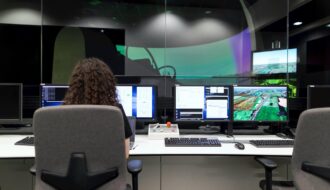When should an employee’s training stop? The best companies to work for would say it never does. Savvy marketing companies know their team is the lifeblood of the business and providing ongoing learning programs helps upskill, shape and motivate their staff. Here’s how continuous learning builds creativity and innovation — and why it matters.
The Importance of Thinking Outside the Box
Businesses that are more creative outperform their peers financially.
In marketing, creative thinking is especially crucial. Marketing teams must constantly innovate to create ad campaigns that reach different demographics, sell new products and keep brands relevant in consumers’ minds. How can marketing leaders use ongoing learning programs to inspire their staff?
Sparking Ideas
One of the most direct ways ongoing training enhances creativity is by exposing people to new ideas. Ongoing learning programs often encourage employees to read books or attend seminars on unfamiliar topics, sometimes only tangentially related to work. They may also use a learning management system to let employees log into online courses at their own pace.
Even if people don’t become experts on novel subjects, simply being introduced to new concepts leads people to operate outside their ingrained thinking patterns. They may begin to see the world from a different perspective and bring fresh ideas into the workplace.
For example, a copywriting team that usually generates content for solar panel companies can take a course on economics, allowing them to write content for a whole new audience. Or, a company’s ongoing learning program can encourage marketing staff to read books about having a growth mindset. Improving in one area often leads to growth across several areas.
Changing Routines
Participating in an ongoing learning program forces people out of their usual routines. Workers may attend a workshop in another town or watch a TED talk they normally wouldn’t have clicked on. They might come into work early and happen to meet the staff who clean the building every morning. Even something as simple as listening to an audiobook during a morning walk to the coffee shop can break up a routine.
Why is disrupting routines important? It forces the brain to make new connections instead of operating on autopilot.
For a marketing team, the ability to innovate is directly tied to success. Meeting people, traveling to different places and trying new things all promote creativity that can translate to marketing prowess.
Directly Teaching New Skills
Ongoing training teaches workers valuable skills that spark innovation and creative thinking. Employers can provide training modules on topics such as:
1. Taking Risks
Comfort is the enemy of innovation. Employees who leave their comfort zone are more likely to come up with new ideas and solutions, letting their creativity loose.
Ongoing training programs should emphasize the importance of taking risks in the workplace, from cold-calling clients to asking for a different role within the organization. They can also encourage people to take risks outside of work to have new experiences and build confidence.
2. Asking for and Giving Feedback
One of the best topics to train in an ongoing learning program is how to ask for feedback. Many employees instinctively avoid asking for feedback for two reasons.
First, it’s often painful to hear. Few people want to know what they’re doing wrong, even if the conversation opens the door to growth or personal improvement.
Second, a common belief is that asking for feedback at work calls attention to a person’s flaws and could negatively affect their manager’s perception of them. Like checking a credit score lowers it, some people think asking for feedback will highlight what they’re doing wrong and lead to getting fired.
Fortunately, the research disagrees with this idea. A Gallup poll found that when employees received weekly feedback from managers, they were 3.2 times more likely to say they were motivated to do outstanding work. They were also 2.7 times more likely to be engaged with their job.
It’s also crucial to train people to give their own feedback to peers and higher-ups when asked. Giving calm, constructive feedback can prompt organizational changes, helping the company improve.
Training people to seek feedback and give constructive criticism builds a more productive, creative and innovative workforce. It fosters a better relationship between managers and their staff.
3. Practicing Mindfulness
In this always-on world, almost every moment of the day is packed with stimuli of one sort or another. People check their email while another website loads. They make phone calls while waiting for their plane. As evidenced by the existence of shower-mounted iPad holders, boredom and mundanity have almost become taboo, leading to few moments with the kind of silence where creativity takes place.
Ongoing learning programs should include a module on mindfulness. The art of living in the moment, mindfulness invites people not to view boredom or idleness as something to immediately remedy but rather as a valuable opportunity to be free of distractions. It allows people to formulate their own thoughts rather than always seeking out someone else’s.
Cultivating mindfulness leads to a more creative marketing team. No longer will innovative thoughts be relegated to long drives — they can happen in the myriad of quiet moments scattered throughout the day.
Businesses can incorporate mindfulness training into their corporate health and wellness programs. Some ongoing training programs even take employees on retreats that emphasize mindfulness.
4. Not Being Afraid to Pitch Bad Ideas
The invention of the lightbulb has become a classic example of the creative process. Thomas Edison and his team created several thousand unsuccessful prototypes before finally landing on the one that would become the modern lightbulb. Each attempt was important — the prototypes allowed Edison’s team to refine their process as they worked, making small improvements to existing models.
For every good idea, there are dozens of bad ones. The creative process involves pitching lots of ideas and sifting through them to pick out the real gems.
Many people are afraid to suggest imperfect or not-quite-finished ideas — especially in the workplace, where they want to appear competent — which leads them to say nothing at all. Ongoing training programs can teach employees to let go of perfectionism, allowing them to brainstorm thoughts without fear of judgment or coming across as uneducated. The free exchange of new ideas encourages creativity and innovation from the marketing team.
Improving Confidence
Learning new skills often improves people’s confidence in their abilities. As a marketing team becomes more talented, they’re more likely to feel comfortable sharing their ideas. They can also get bolder with their creative choices and execute more challenging projects without guidance. Having a confident team is foundational to growing a successful business.
Encouraging Growth
Learning is a lifelong process. A company’s ongoing training program offers multiple ways to encourage, inspire and educate the marketing team. By opening people’s minds to new ideas and helping them break free of routines, continuous training promotes creativity and innovation that will help the business from the inside out.
Related Posts
Devin Partida writes about topics concerning tech and the internet. She is also the Editor-in-Chief of ReHack.com.







